Marine Life & Conservation
Exploring with the Dive Ninjas: Diving with the Mobula Rays of Baja California, Mexico
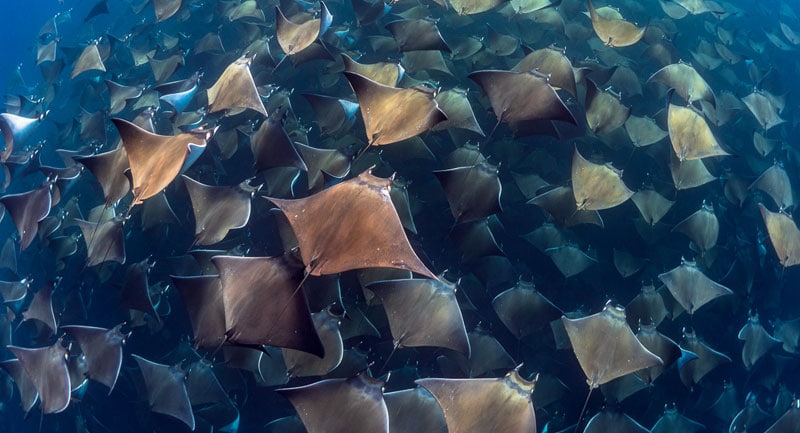
We are super excited to bring you the first in a new series of exclusive blogs for Scubaverse from Jay Clue, Founder of Dive Ninja Expeditions… Welcome Jay!
It’s dawn on the Sea of Cortez and the sun has just lifted above the horizon igniting the Baja sky and surrounding desert mountains with neon orange hues. As I scan the horizon, the silence on the water is almost deafening. Then it happens… A slap echoes across the sea. Then in quick succession another. And another. And another. It sounds like popcorn. Within seconds there are so many mobula rays leaping clean from the ocean’s surface that we struggle to even count them. We quickly grab our fins, masks and cameras, and get ready to jump in.
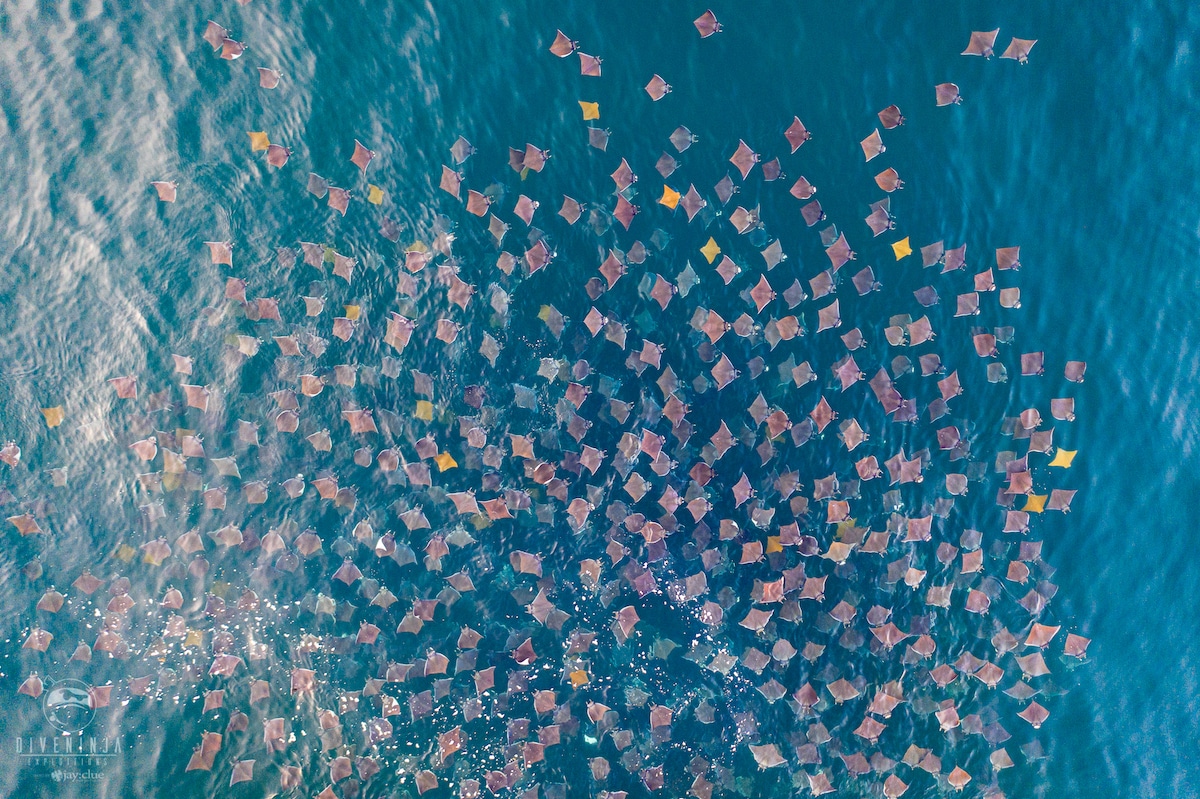
What comes next is something I struggle to put into words – no matter how many times I’ve seen it or try to speak about it. Imagine looking below the surface and your entire view is filled with a gigantic school of devil rays. Stretching from the ocean surface down to as far below as you can see. While white beams of light dance through the water the school swims in unison. It’s as if Mother Nature had choreographed thousands of beautiful underwater birds soaring together along a deep blue ocean backdrop. I’ve never seen anything else remotely close to it in the world. This is the annual mobula ray aggregation of Baja California Sur, Mexico.
The mobula rays of Baja California, or more specifically, Munk’s Devil Rays (Mobula munkiana, also known as Pygmy devil rays) live here year-round, but can also be found throughout the tropical eastern Pacific from Mexico to Peru. Usually they are found alone or in small groups. But every spring they begin to congregate in certain areas in southern Baja, creating what are considered to be the largest schools of any ray species on earth – and one of our planet’s most incredible natural spectacles. It is believed they gather here following the changing water temperatures to find mates and gorge on blooms of mysid shrimp and other zooplankton.
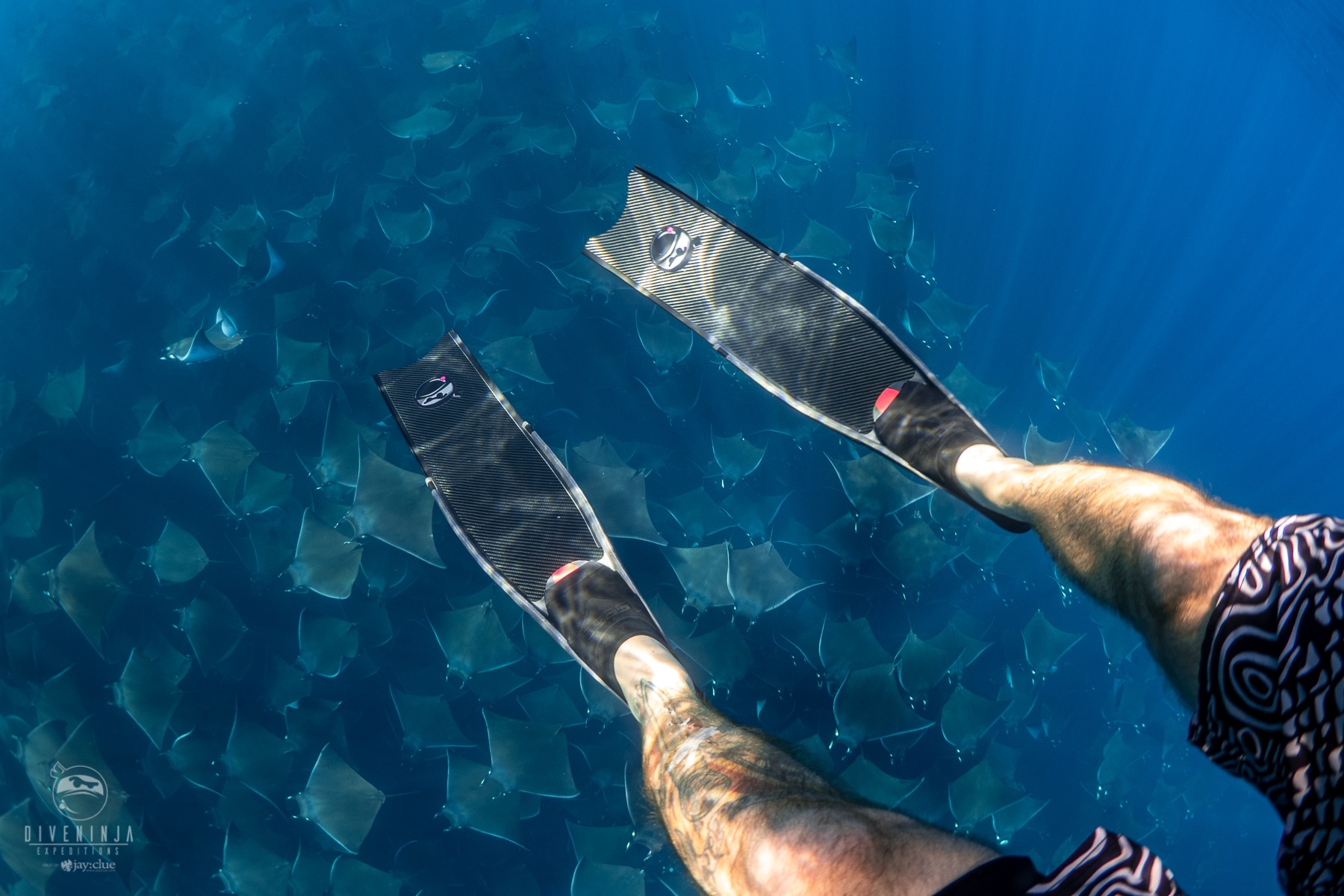
Although they create these gigantic schools every year not much is actually known about them. For example, we do not know how long they live for, or what their migration patterns are, or even why they love to jump from the water so much.

What we do know is that the IUCN has classified the Munk’s Devil Ray as Near Threatened since 2006. They also have one of the lowest fecundity rates (chance of reproducing) of any marine species due to them being estimated to only give birth to 1 pup every 2-3 years. This tied with them frequently being caught as bycatch in commercial fishing, gillnets, and by trawlers means their populations could easily take a sudden turn for the worse and diminish quite quickly. Scientists like Marta are working hard to better understand them so that more protections can be put in place to help preserve these elegant creatures and the natural wonder they create.
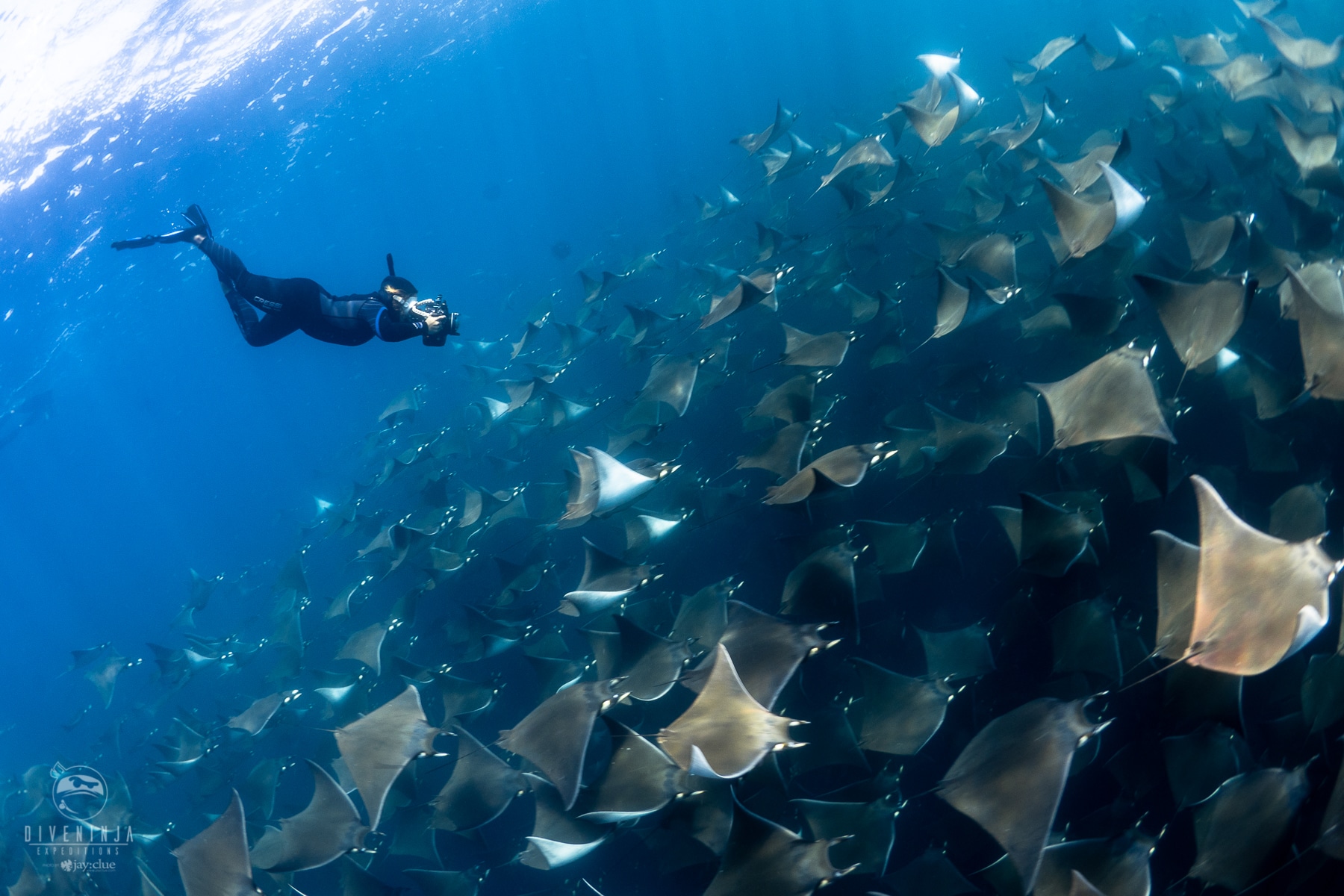
They are the smallest ray in the mobula family measuring about 1.1 meters from wing tip to wing tip – making them a fraction of the size of their huge cousins – the Oceanic Manta Ray. But what these little ninjas lack in physical size they make up for in acrobatic stunts. They are often seen flying from the water performing incredible flips and vertical jumps to heights of almost 3 meters above the surface – making for awesome encounters both above and under the water. Seeing the schools they create is an experience you will never forget. Diving alongside a school towering 20 meters tall and what seems like endless in length is jaw dropping. It is a stunning reminder of how remarkable our oceans truly are.
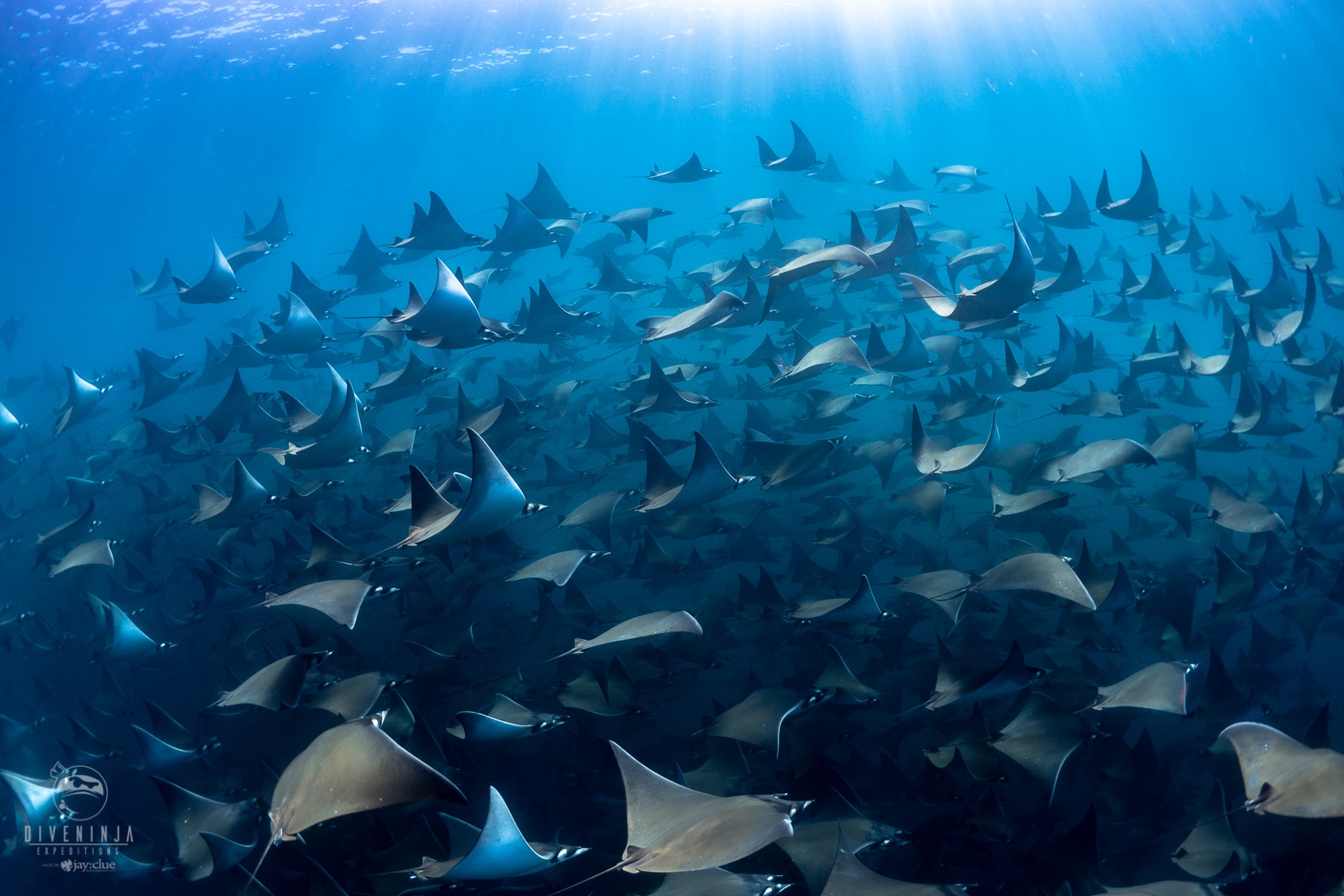
How to Experience it
The best time of year to see them is from late April until around mid July. Water temperatures this time of year can be a bit chilly around Baja, so you’ll def want to pack a wetsuit. But since all the action is within the first few meters of water, and the rays tend to stay away from bubbles, you can leave all the scuba gear at home and just pack your fins, mask, snorkel, and wetsuit. Flights are pretty straight forward with direct flights from many US cities, as well as Mexico City, into the Los Cabos International Airport (SJD).
There a few tour operators offering short half day tours to see them in La Paz and Cabo San Lucas. But for the best way to experience the magic of this event I would recommend planning for a few days with them because the action changes every day. Dive Ninja Expeditions runs specialized 5 and 8 day ‘Mobula Ray Expeditions’ to their ‘secret spots’ far away from the big cities and hoards of tourists. The expeditions are well thought out and include pretty much everything — oceanfront accommodation in a beautiful little beach town, round trip transfers from Cabo, educational talks & presentations, specialized Team Ninja guides, meals, and a lot more.
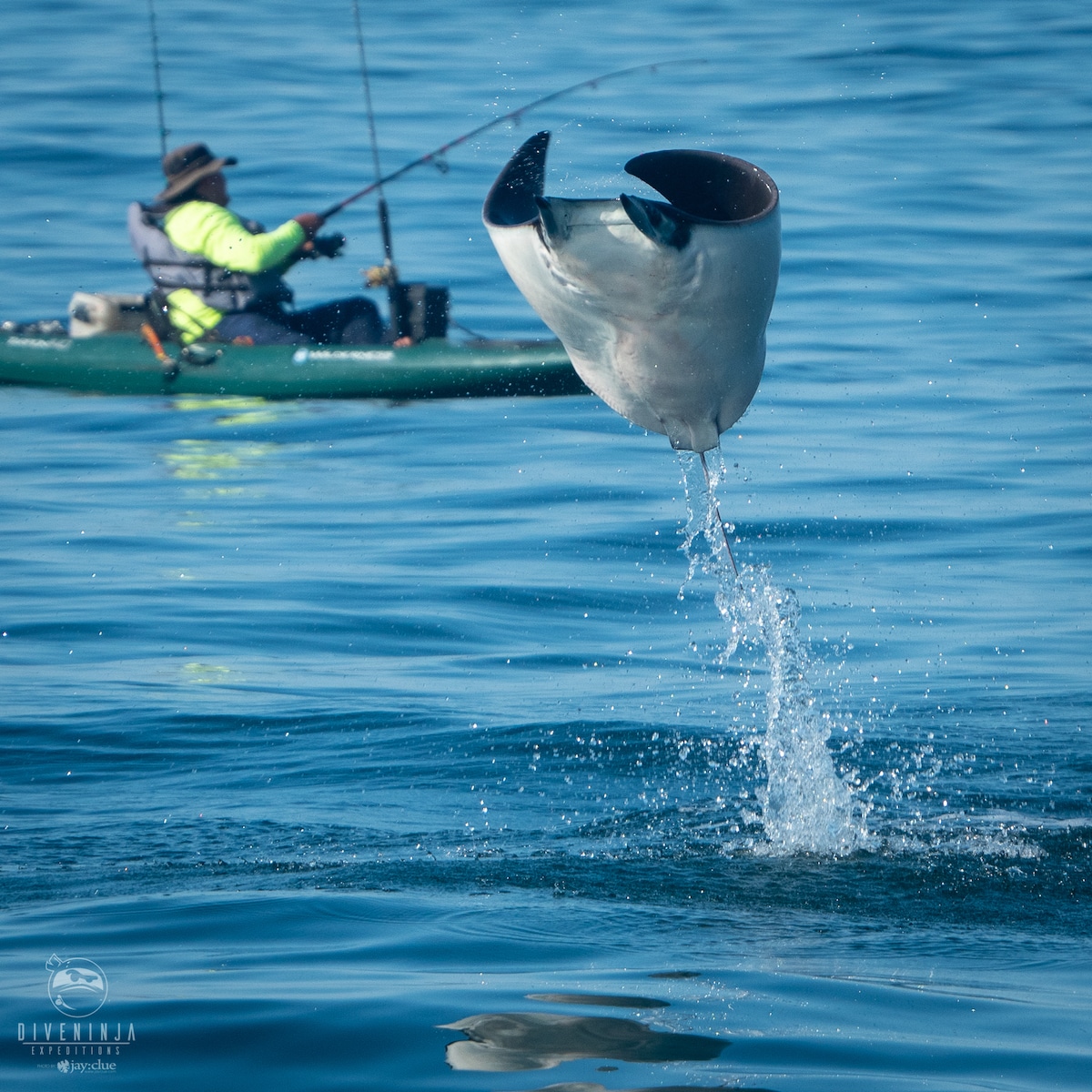
Additionally they offer citizen science style trips where the guests get to learn more about the rays and can take part in critical mobula ray research activities alongside marine scientist & mobula ray expert, Marta Palacios. Plus in proper eco-ninja fashion, a portion of your ticket purchase is donated by Dive Ninjas to help fund Marta’s research and local conservation efforts to protect these incredible creatures.
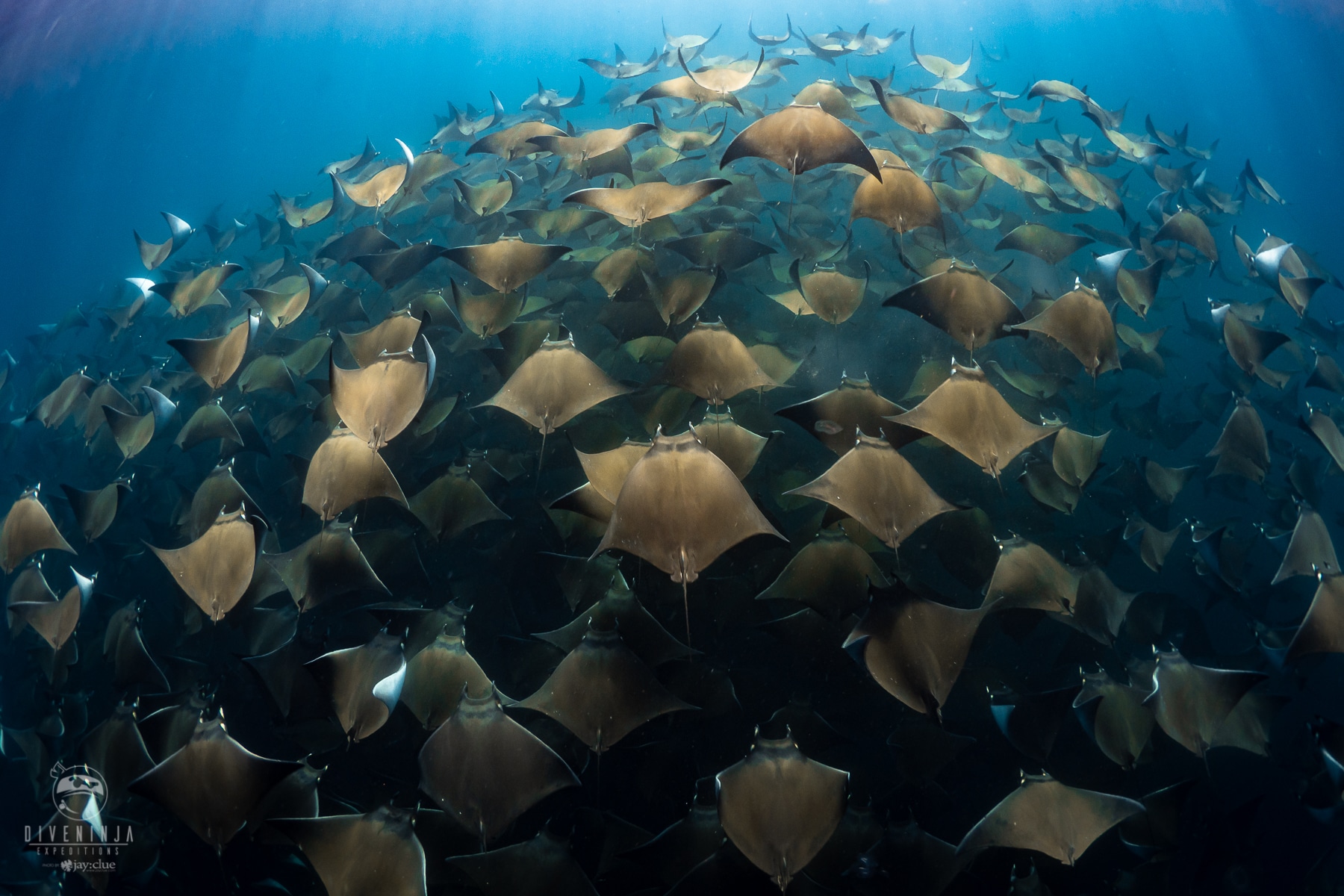
Interested in checking out this extraordinary adventure yourself? Visit the Dive Ninja Expeditions website, they’ve just released their 2020 Mobula Ray Expedition dates!
 For more from Jay Clue and Dive Ninja Expeditions, follow:
For more from Jay Clue and Dive Ninja Expeditions, follow:
Instagram: instagram.com/JayClue
Facebook: facebook.com/iamjayclue
Website: www.DiveNinjaExpeditions.com
Marine Life & Conservation
Paul Watson Released as Denmark Blocks Japan’s Extradition Bid

Renowned anti-whaling activist Paul Watson has been released from custody in Greenland after spending five months in detention. Denmark’s Justice Ministry rejected Japan’s request for his extradition, citing insufficient guarantees that his time already served in custody would be credited against any potential sentence.
The 74-year-old Canadian-American was arrested on July 21 in Nuuk, Greenland’s capital, when his ship docked to refuel. His arrest was based on a 2012 Japanese warrant related to a 2010 encounter in Antarctic waters. Japan alleged Watson obstructed operations and caused damage to a whaling research ship during efforts to disrupt illegal whaling. Watson has consistently denied these claims, maintaining his commitment to marine conservation.
Denmark, which oversees extradition matters for Greenland, concluded that while the legal conditions for extradition were met, the lack of assurances from Japan regarding time-served credit made extradition untenable.
In a video shared by his foundation, Watson expressed gratitude and relief, saying, “After five months, it’s good to be out… and good to know they’re not sending me to Japan.” He added that the most difficult part of his time in custody was being separated from his two young sons.
Watson is a pioneering figure in marine conservation, known for founding the Captain Paul Watson Foundation in 2022 after decades of activism with the Sea Shepherd Conservation Society. His bold efforts to defend marine life have earned him widespread support, including from celebrities and conservationists. His work has also been featured in the acclaimed reality TV series Whale Wars.
Watson’s lawyer, Jonas Christoffersen, praised the decision, stating, “We are happy and relieved that Paul Watson is now free.” He added that Watson is eager to reunite with his family and continue his vital work.
The arrest occurred while Watson’s vessel, the M/Y John Paul DeJoria, was en route to the North Pacific with a team of 26 volunteers to intercept a Japanese whaling ship. His foundation described the arrest as politically motivated and emphasized that Watson’s actions were focused on ending illegal whaling practices.
Japan resumed commercial whaling in 2019 after leaving the International Whaling Commission, asserting that whale meat is a cultural tradition. Conservationists, however, continue to challenge these practices, highlighting their impact on marine ecosystems.
Despite the challenges, Watson remains steadfast in his mission to protect marine life and bring attention to whaling practices. His dedication to ocean conservation has made him a globally respected advocate for the environment.
Marine Life & Conservation
12 Days of Zero-Waste Fish-mas

This holiday period, the Marine Conservation Society, the UK’s leading ocean membership charity, invites you to make some simple changes to eating fish this Christmas to help our seas.
Dr Kenneth Bodles, Head of Fisheries and Aquaculture at the Marine Conservation Society, said, “During the festive season, our consumption increases, but so does waste. Sustainability isn’t just about where food comes from – it’s also about how you use it. By reducing waste and making the most out of your seafood, you’re not only taking steps to be more ocean-friendly, but can also help to cut costs during what is often one of the most expensive times of the year”.
The Marine Conservation Society has compiled twelve tips on how to consume seafood sustainably with zero-waste this Christmas:
Buy whole fish instead of fillets
Instead of fillets, consider buying whole fish such as salmon, hake, or lemon sole. By adopting a “nose to tail” approach with cooking, whole-baked fish not only feeds a crowd, but also helps to minimise waste and maximise sustainability by using up every part of the animal, including bones, skin, and fat.
Make fish stock
Leftover fish bones or shells can be put to good use by boiling them to make a nourishing fish stock or bisque. This can be frozen and preserved for later use and makes for a flavourful base in a soup.
Make your own fish pâté
Avoid waste by turning leftover fish, such as smoked mackerel or salmon, into a delicious pâté by blending with cream cheese and lemon. Perfect when paired with crackers.
The sustainability of salmon and mackerel varies depending on where and how it is caught or farmed. For more information on green-rated options, check the charity’s Good Fish Guide.
Buy frozen
By purchasing seafood that is frozen or vacuum-packed, this helps to reduce waste by extending the shelf life of your food.
Fish pie
If you’re wondering what to do with leftover cooked fish, why not opt for a classic fish pie with mashed potatoes, leeks, and a cheesy sauce? A sure crowd pleaser on Boxing Day.
Use the head
Don’t forget the fish head! The meat is incredibly tender and flavourful. The charity recommends a cod’s head curry or recreating Fallow’s renowned cod’s head in siracha butter.
By stretching your ingredients further, not only is this a more sustainable way to enjoy seafood, but also cost-effective by repurposing leftovers and cooking creatively.
Boxing Day brunch
Mix leftover kippers or smoked salmon with scrambled eggs for a tasty, zero-waste, Boxing Day brunch.
For best choice, make sure you buy kippers, or herring, from the North Sea and the North Irish Sea.
Zero-waste storage
A top tip from the Marine Conservation Society to avoid waste is freezing fish offcuts to save for future use.
Crisp up the skin
Even leftover fish skin can be turned into a quick savoury snack by crisping it up in an air fryer with a little olive oil and salt.
Anchovies two ways
Leftover anchovies can either be blended with butter to make a delicious anchovy butter or tossed into pasta for a hit of umami flavour.
The charity recommends opting for anchovies caught in the Bay of Biscay for best choice.
Fishcakes
For an easy, zero-waste meal, leftover seafood trimmings can be mixed with mash and fried in breadcrumbs to make fishcakes.
Pickled mussels
Try pickling mussels in 1:1 vinegar and water, with a dash of sugar for a sustainable, zero-waste snack that can be enjoyed well beyond the festive season.
Mussels farmed in the UK are a seafood superhero. Grown using low-impact methods and harvested by hand, they get all the food they need from the sea around them. This makes them one of the most sustainable, ocean-friendly, and cost-effective seafood options.
Players of People’s Postcode Lottery have raised £6.6M towards the Marine Conservation Society’s vital work in making seafood more sustainable.
Laura Chow, Head of Charities at People’s Postcode Lottery, said: “Fish is a festive favourite for many, but making sustainable choices when it comes to how we buy and eat seafood makes all the difference for our ocean. Support from players of People’s Postcode Lottery has helped the Marine Conservation Society further its sustainable seafood work, so that we can all enjoy healthier, better protected seas.”
The Marine Conservation Society encourages you to make sustainable seafood choices a year-round habit, not just for Christmas. To check how sustainable the seafood on your plate is, you can visit the charity’s Good Fish Guide. The Guide helps consumers and businesses identify the most sustainable seafood using a simple traffic light system, based on where and how species are caught or farmed. Green is the best choice, amber means improvements are needed, and red indicates fish to avoid buying.
Zero-waste gift idea
Why not embrace a zero-waste Christmas by gifting a membership to support marine conservation? It’s a meaningful, low-waste gift that helps protect our ocean for generations to come. Memberships start from as little as £5 a month – the price of a sandwich and drink from your local coffee shop.
Find the latest sustainable seafood advice for wild-caught and farmed seafood on the Good Fish Guide, downloadable to your phone from www.mcsuk.org/goodfishguide.
-

 News2 months ago
News2 months agoIconic SS United States to become the World’s Largest Artificial Reef
-

 News3 months ago
News3 months agoBook Review – 52 Assignments: Underwater Photography
-

 Gear News3 months ago
Gear News3 months agoDYNAMICNORD – New German diving brand enters the British market
-

 News3 months ago
News3 months agoExploring Cenote El Pit: A Diver’s Dream
-

 Gear News3 months ago
Gear News3 months agoTry BARE drysuits (and maybe even win one!) this Friday with Sea & Sea at North West Dive Fest
-

 Marine Life & Conservation3 months ago
Marine Life & Conservation3 months agoBook Review: Coral Triangle Cameos
-

 Blogs2 months ago
Blogs2 months agoDive the Egyptian Red Sea this Autumn with Regaldive
-

 News3 months ago
News3 months ago2024 Ocean Art Underwater Photo Competition Announced















